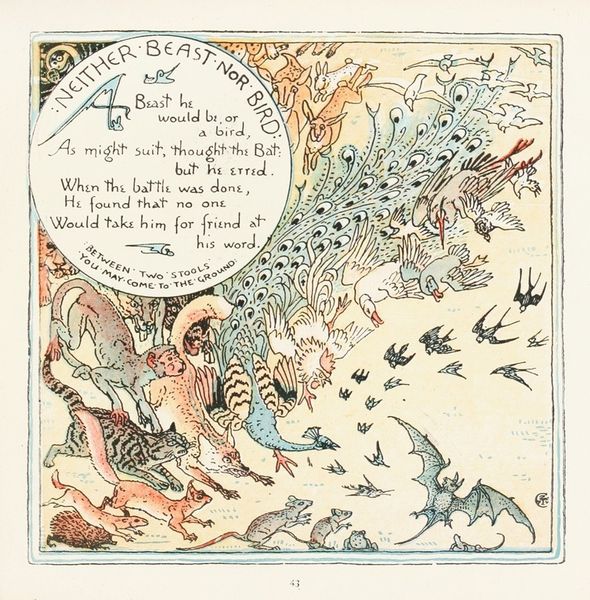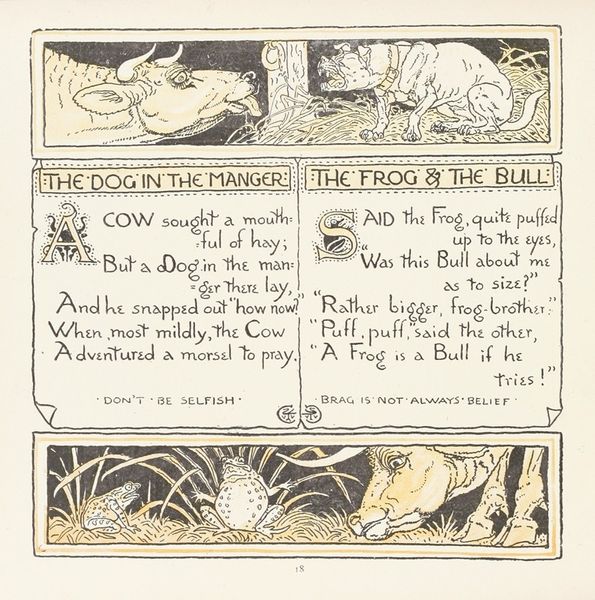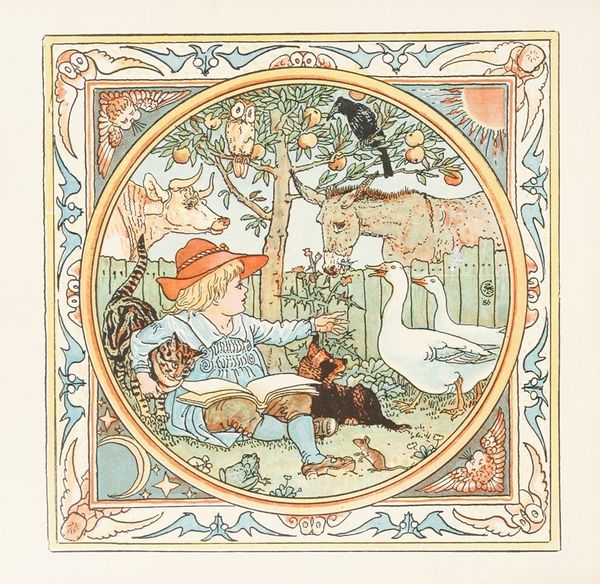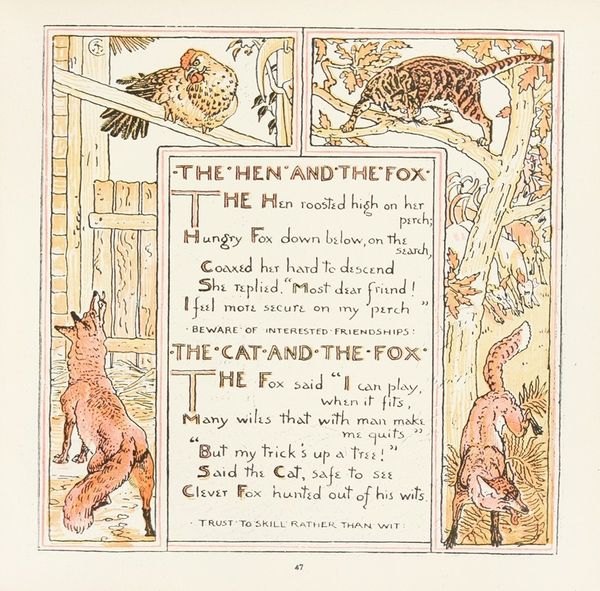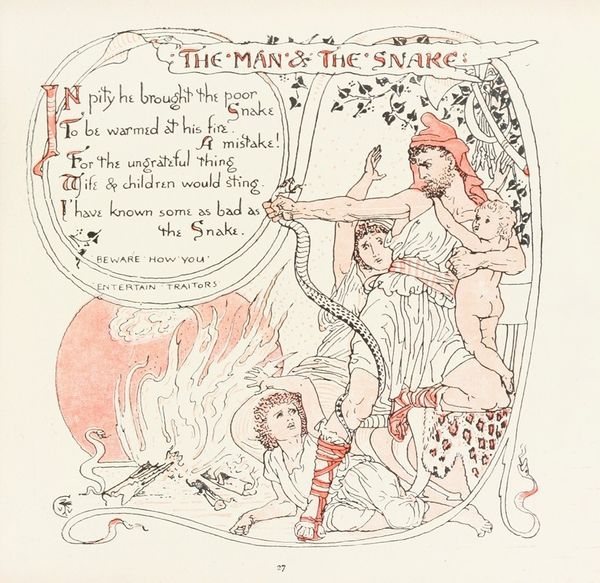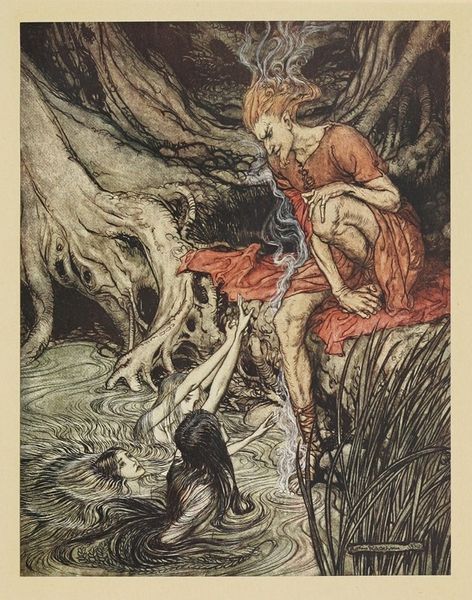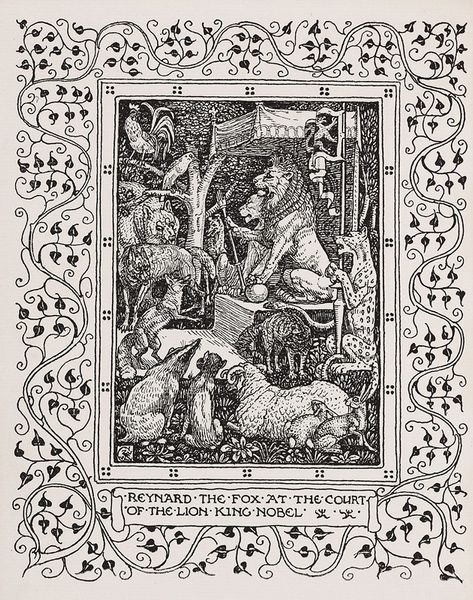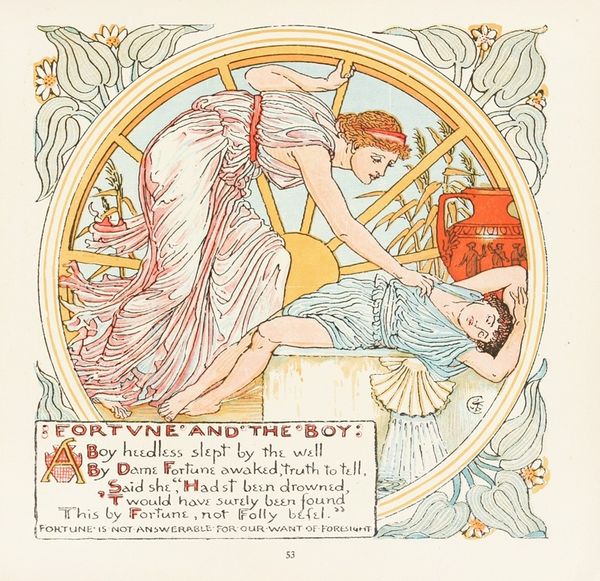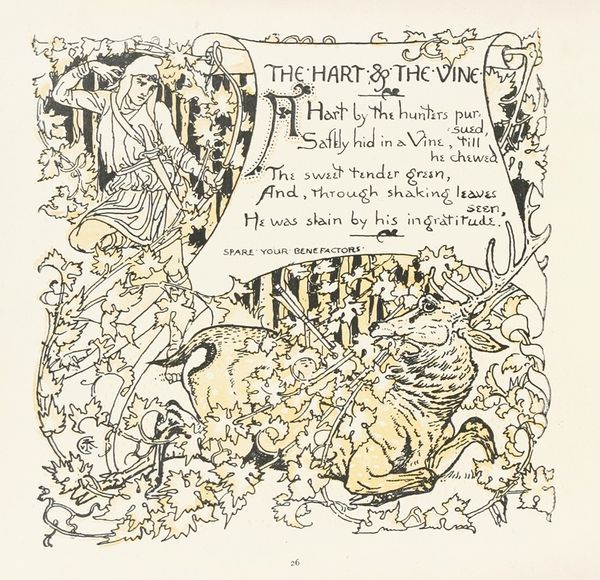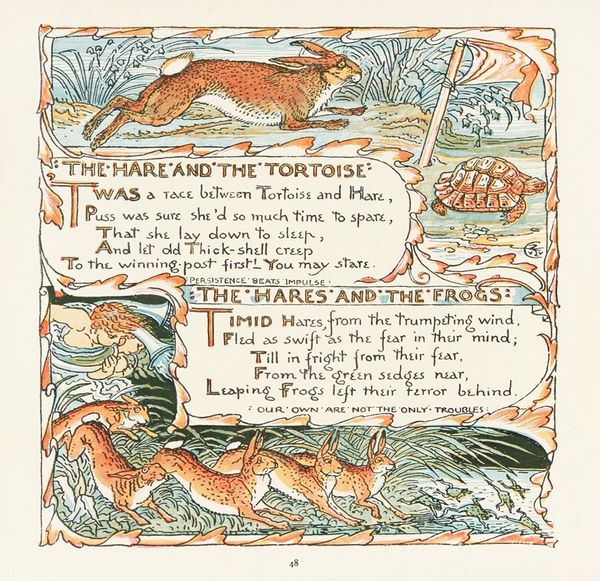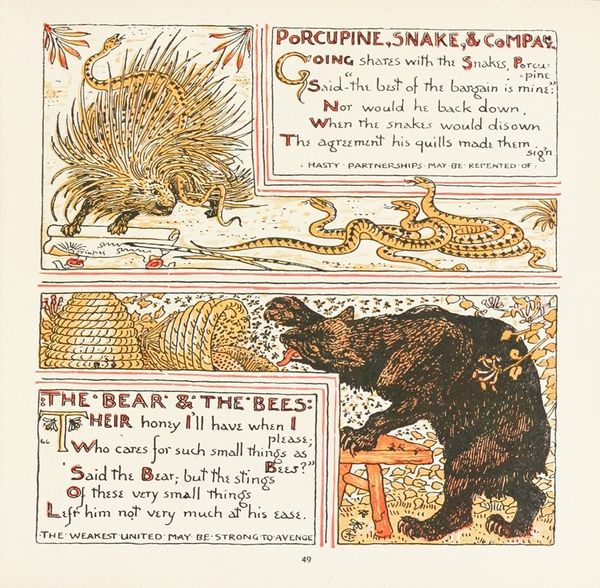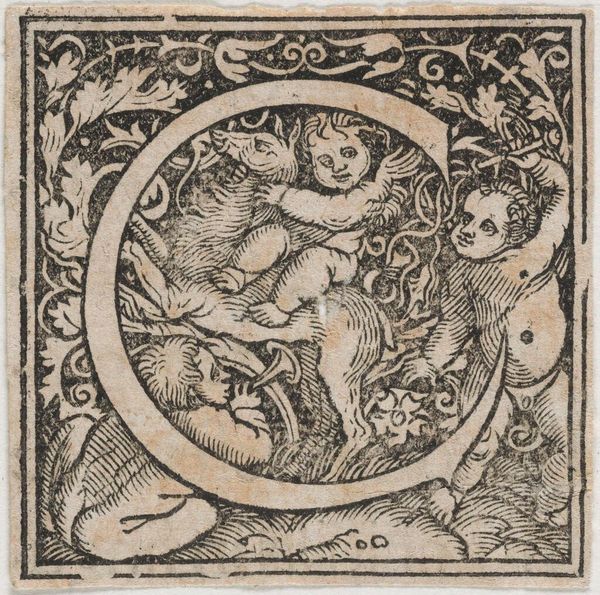
drawing, print, ink
#
drawing
#
fairy-painting
#
art-nouveau
#
narrative-art
# print
#
figuration
#
ink
Copyright: Public Domain: Artvee
This is Walter Crane's illustration, "The Fox without a Tail," made with ink and watercolor. This image, like other late 19th century illustrations, was made possible by innovations in mechanical reproduction. The printing press was evolving, allowing for more detailed and colorful images to be widely distributed. The application of watercolor would have added depth and richness to the image. Look at the layering of tones in the foxes' fur, the use of fine linework to define shapes, and the touches of gold ink that give the image a luxurious feel. The paper's texture also plays a role, subtly affecting the absorption of the watercolor washes. Crane's art was deeply intertwined with the social and political movements of his time. He believed that beautiful design should be accessible to all, not just the wealthy. The mass production of images like this one aligned with this ethos. It brought art and beauty into the homes of a wider audience, subtly influencing their aesthetic sensibilities and, perhaps, their social consciousness. This speaks to the potential of accessible art to shape culture and challenge class divisions.
Comments
No comments
Be the first to comment and join the conversation on the ultimate creative platform.
